Yoro Valley’s Tsutsumori Momiji Valley – A Fall Foliage Trip By Local Train

We introduce the scenic Tsutsumori Momiji Valley situated in Yoro Valley, a famous autumn leaf viewing spot near Tokyo. Take the Kominato Railway, a local retro line, and venture out to see lush nature decked out in colorful fall foliage. Go on a day trip in fall to this special nature destination.
A Fall Foliage Spot Near Tokyo
When talking about fall foliage spots in Japan, many people may think of Kyoto or regions far from Tokyo.
There are, in fact, well-known fall foliage spots in Chiba Prefecture, which is located next to Tokyo. First is the park in Naritasan Shinshoji Temple. It’s near Narita Airport and accessible by either the JR West or Keisei Main Line, which makes it a convenient visit.
Naritasan’s park is very spacious. It is the ideal spot to enjoy the autumn leaves while surrounded by a large pond, waterfalls, maple trees, and gingko trees. Visitors can also fully immerse themselves in nature with a walk along the promenade. The road leading to the temple is lined with restaurants and souvenir shops that will satisfy your heart and stomach.
This time, we’ll be introducing another fall foliage spot called Yoro Valley located right in central Chiba. Get on board a local train full of retro vibes then venture out to see nature and the beautiful autumn leaves that cover Tsutsumori Momiji Valley.
Travel on the Kominato Railway Line
Travel to Yoro Valley on the Kominato Railway Line. The Kominato Railway is a private railway that travels across Ichihara in central Chiba.
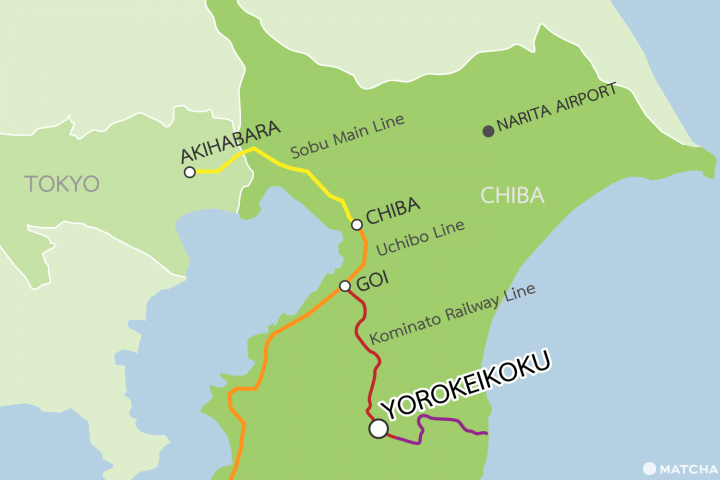
From Tokyo, take the Sobu Main Line from Akihabara Station, then transfer to the Uchibo Line at Chiba Station until you reach Goi Station. There, you’ll find a passageway that connects to the Kominato Railway. IC cards like Suica and PASMO cannot be used from here. Because it's a genuine retro train line, make sure to buy a paper ticket.
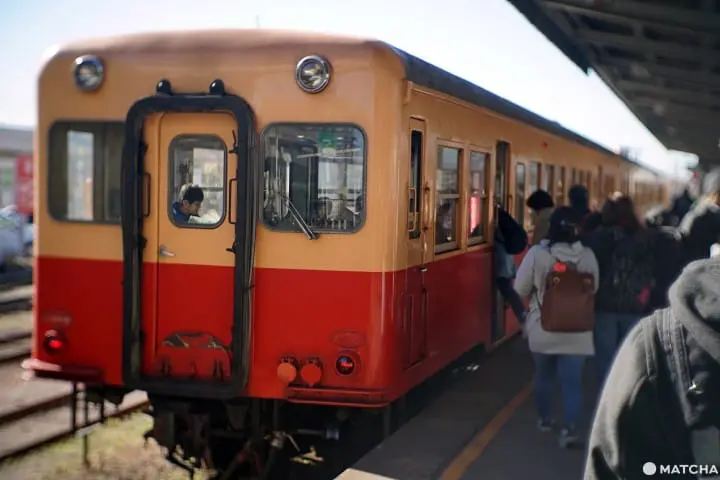
The train is already waiting at the platform.
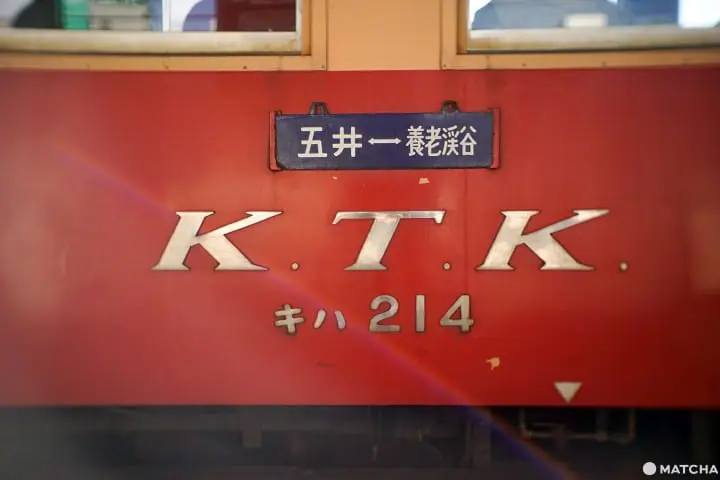
Depart from Goi Station on a train bound for Yoro Keikoku Station. The last stop is right where we want to go.

The train cars are retro-cute! Don't forget to take a picture if you have the time.
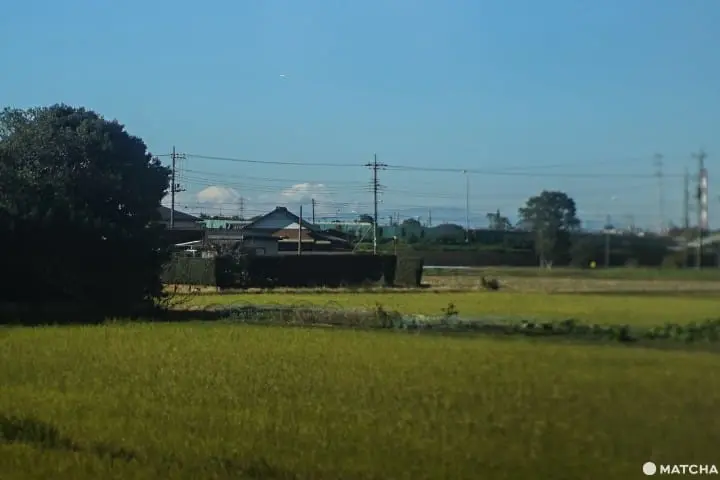
Once we departed Goi Station, the scenery changed into a broad expanse of fields. Mt. Fuji could also be seen in the distance.
Yoro Keikoku Station
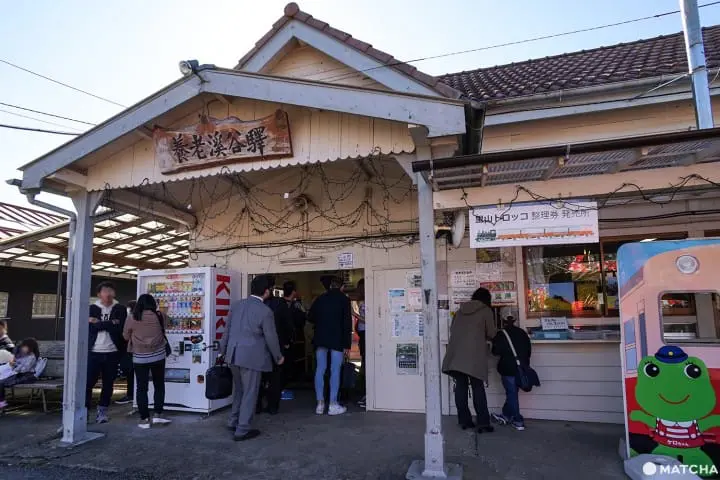
It took about one hour for us to arrive at Yoro Keikoku Station. The train fare is 1,250 yen for a one-way ticket.
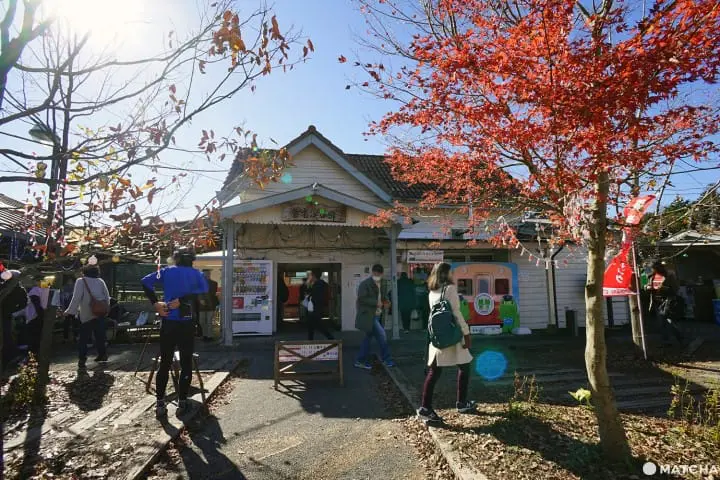
In May 2017, 22 facilities around Yoro Keikoku Station—including buildings and bridges spanning across several rivers—were registered as Cultural Properties of Japan. Constructed in 1928, the wooden structure of Yoro Keikoku Station is also one of these facilities.
Under the clear autumn sky, the maple trees in front of the station had transformed into a beautiful vermilion hue.
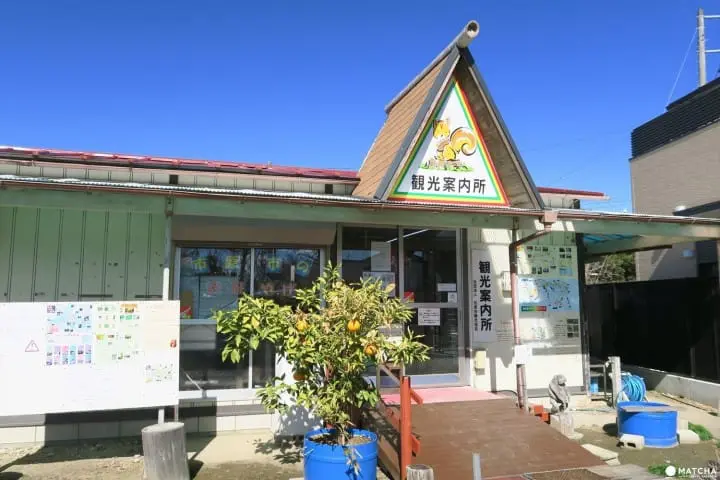
Picture from Yoro Valley In Chiba – Incredible Natural Wonders All Year Long
Once you've arrived at the station, stop by the tourist information center to get a sightseeing map. It's the single-storied building to the left once you leave the station.
Let’s Go to Tsutsumori Momiji Valley
For today, we are planning to take the bus to Tsutsumori Momiji Valley before returning to the station area. Take the Boso Satoyama GO, a limited-time bus route that only operates on the weekends and national holidays during the autumn leaves season (late October to early December).
The 2019 bus schedule will be published on the Kominato Railway Bus official website (Japanese) sometime in October.

We took the 12:36 bus that departs in front of the station. From there, we rode the bus for about eight minutes, then alighted at the Tsutsumori Momiji Valley Bus Stop. After exiting the bus, you'll start to see the entrance sign for Tsutsumori Momiji Valley on the left-hand side. The message written on the sign reads, "Approximately 1km, do your best and walk!"
This unexpected sign encouraged us to continue walking!
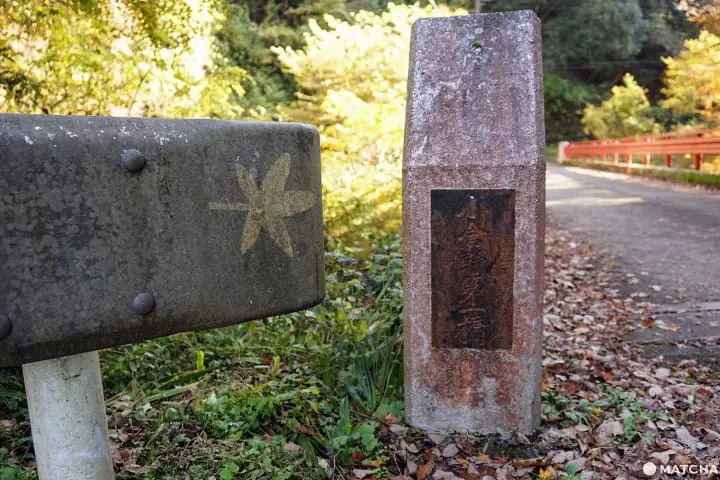
You'll feel the temperature dropping as you progress further on the walk. While large trees appeared to grow thickly around the surrounding cliffs, the weather was excellent. We've reached the first bridge. There are even cute little maple leaf drawings on the guardrails.
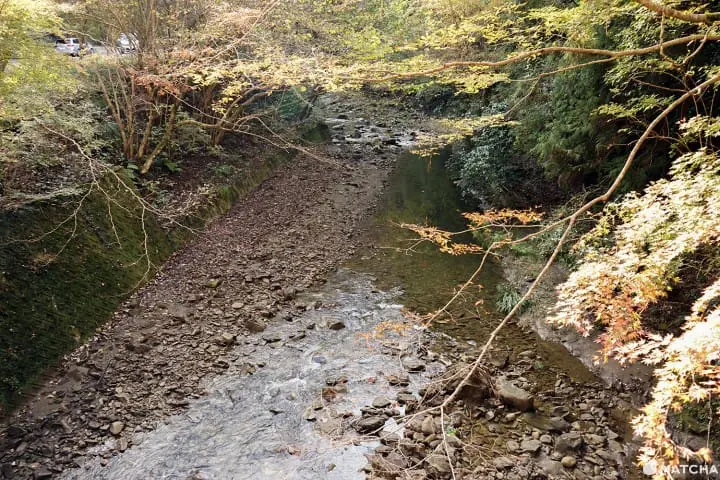
A river flows under the bridge with clean, pure water. Because the trail winds through the mountains, there were several other waterways along our trek.
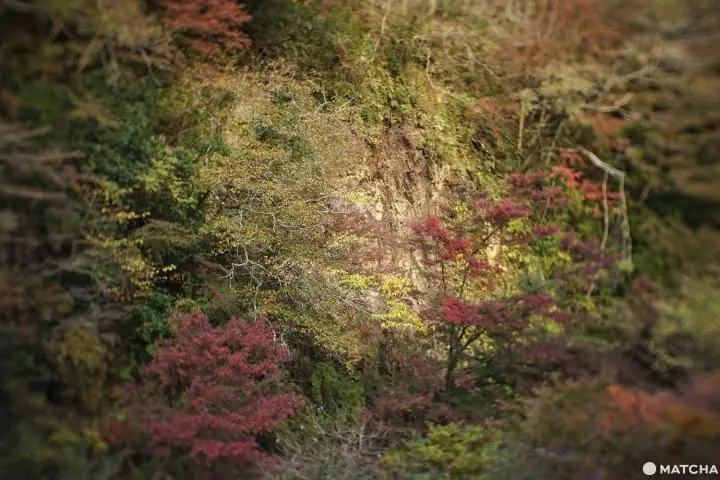
We visited the valley on November 23, 2018. This period is usually when the leaves reach their peak. However, Japan was hit by a heatwave last year, which made it difficult for the temperature to drop and caused the late arrival of autumn foliage. On this day as well, the fall foliage was still only sparsely blended in with the surrounding greenery.
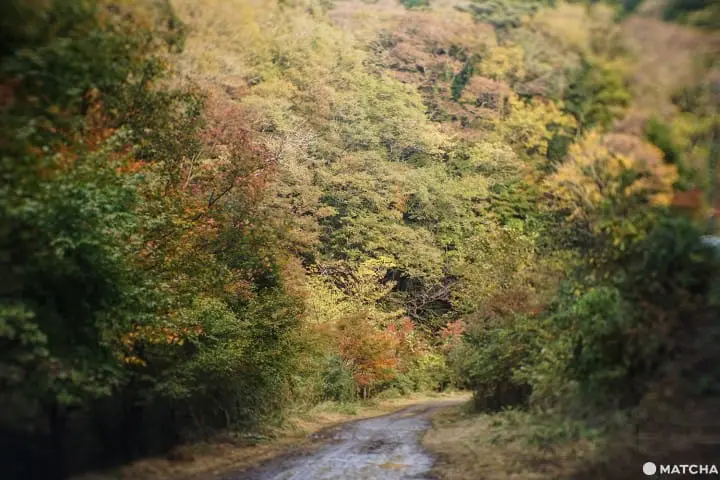
Nonetheless, the nature here is worth seeing, even if you can't enjoy the brilliantly colored autumnal leaves.

It'll take about ten minutes to leisurely walk from the starting point to this area. You won't feel tired. We pondered how old the towering trees around us were. We also stumbled upon other visitors taking a walk in the valley, much like we were along our trek.
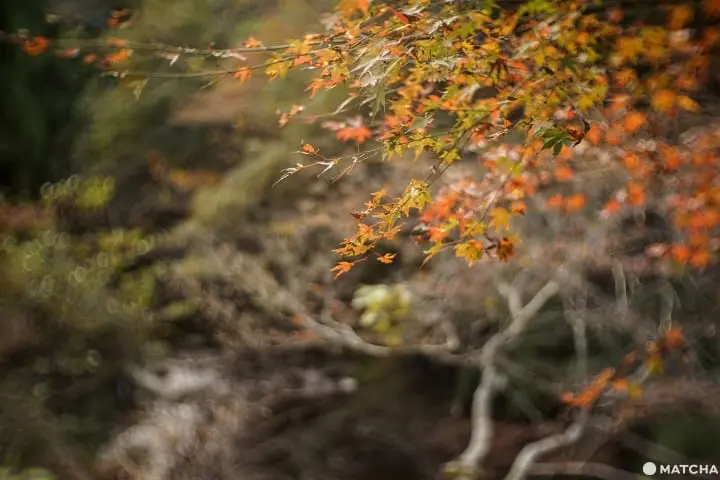
The leaves were beginning to change color here and there along the walking route.
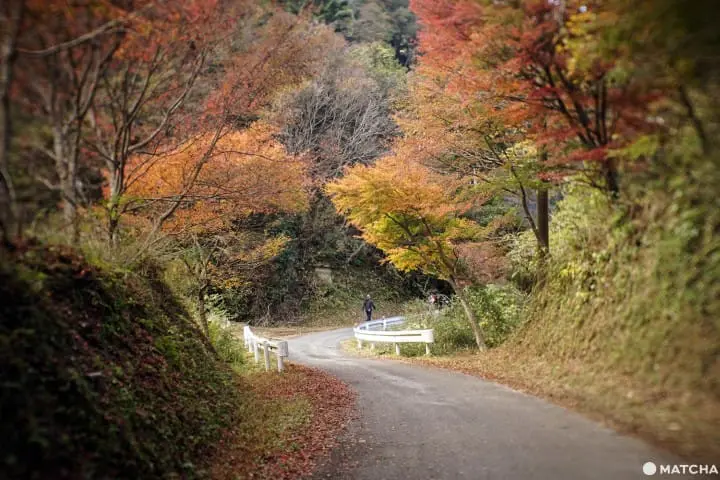
You'll come upon a winding mountain road. There's plenty of space for parking because most people come to the valley by car. However, we'll continue pushing on by foot!
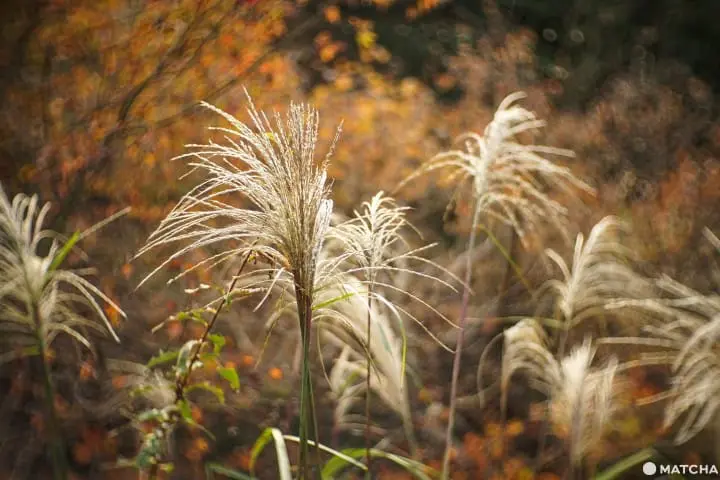
The white pampas grass shimmered amid the multicolored vegetation.
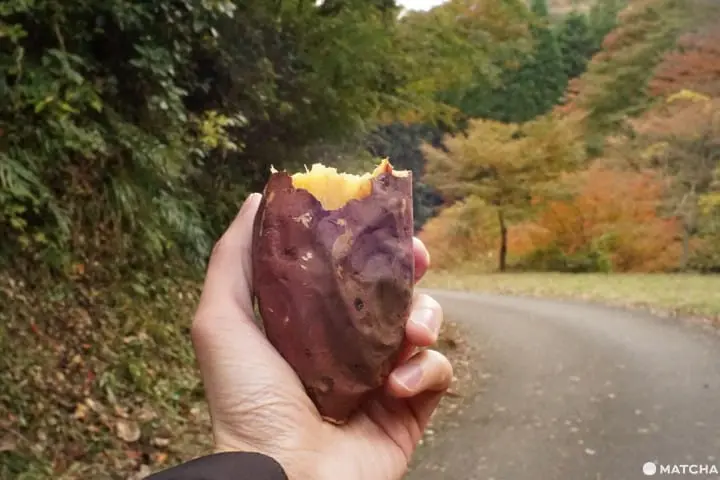
The temperature is cold enough to make your hands numb. On the summit, locals were selling vegetables and roasted sweet potatoes. We decided to buy a starchy snack to warm our hands.
Prices will vary on the size of the potato, but we bought one for 300 yen (pictured at half its size). It was sweet and tasty!
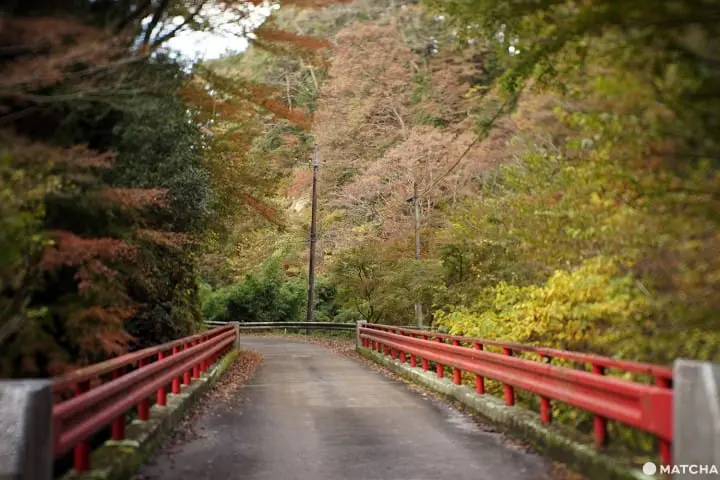
Now, let's return back on the route we came. In the backdrop, you'll see a crimson-colored bridge that adds a pop of color to the scenery.
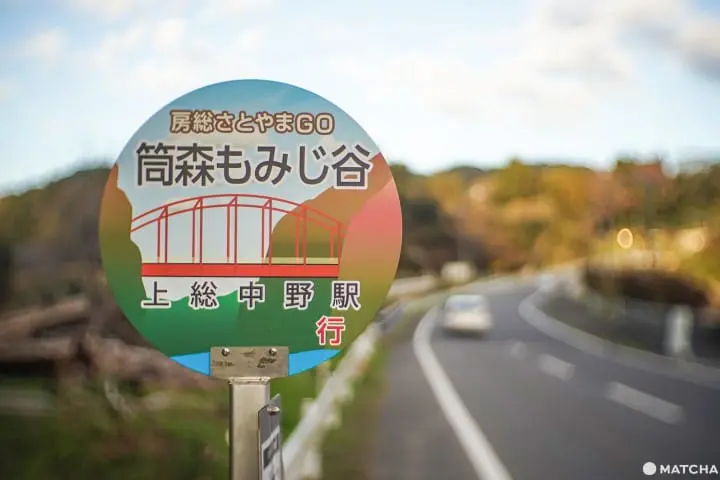
To take the bus to Yoro Keikoku Station, we headed to the opposite side of the bus stop where we first disembarked. We took the 15:36 bus back.
Cross the Red Bridge to Visit the Goddess Kannon at the Summit
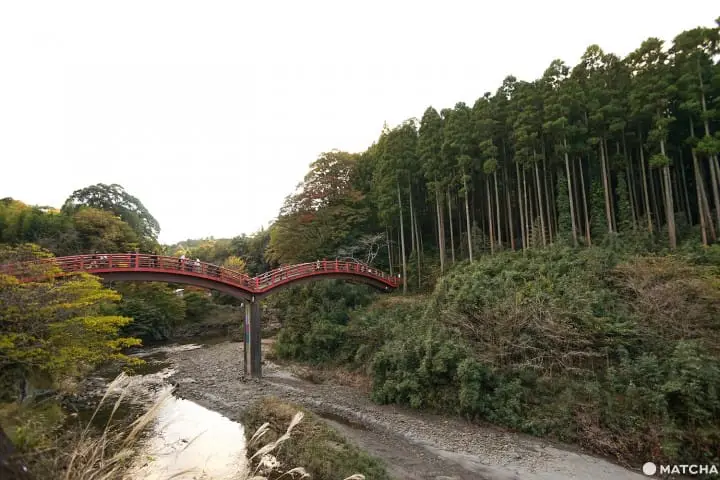
Do not get off at Yoro Keikoku Station, but rather, disembark at Kobundo Entrance—the stop right before it. We're coming here to see the elegant red bridge that sits at the entrance to the Nakase Promenade.
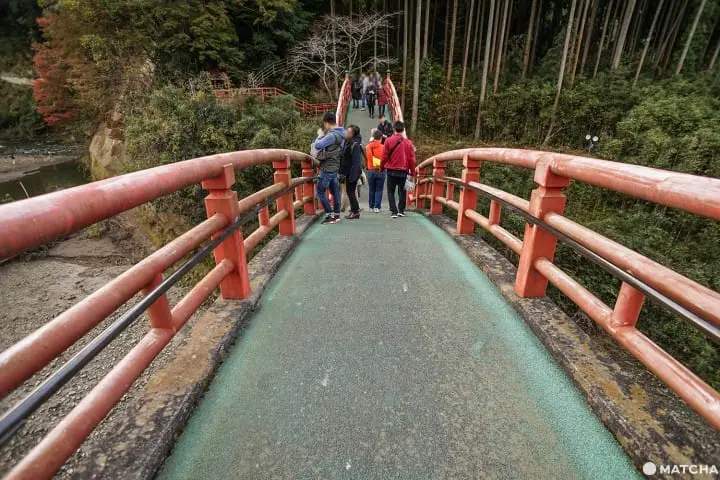
This is the Kannon Bridge, which leads to Shusse Kannon Rikkokuji Temple on the mountain's summit.
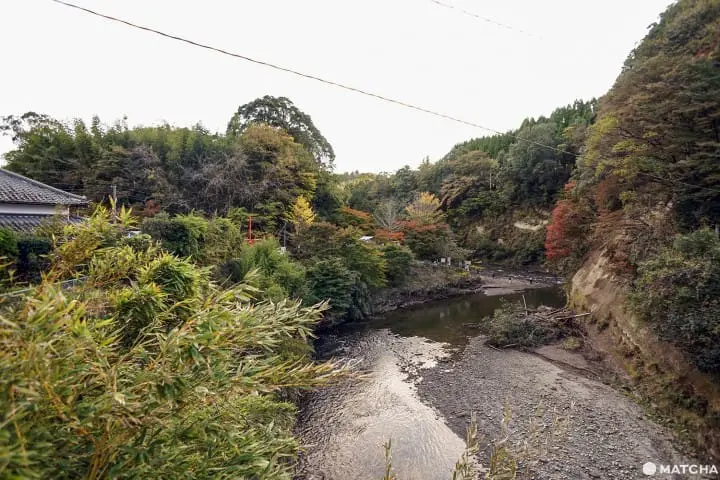
If you look to your left from above the bridge, you'll see visitors walking to the dry riverbed. Although we also wanted to head there, let's first go to the temple for now.
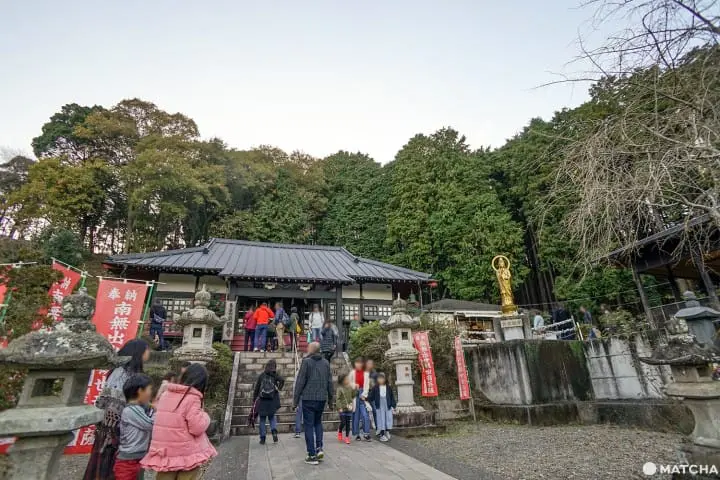
Follow the route up the mountain to arrive at Shusse Kannon Rikkokuji Temple—perched on the summit. This temple is famed for being visited by Minamoto no Yoritomo, the first shogun of the Kamakura shogunate, to pray for victory. Established in 1185, the Kamakura shogunate was a political administration led by the samurai.
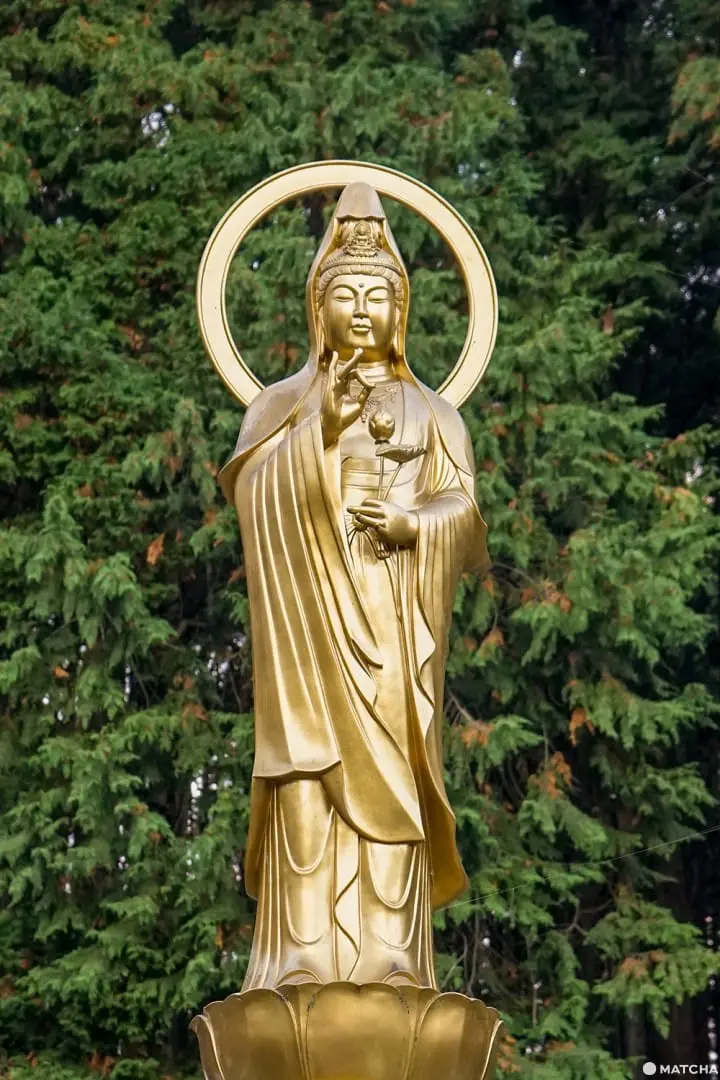
Locals began calling this statue "Shusse Kannon" (or literally, "Getting Ahead Goddess") after Minamoto no Yoritomo to share his luck. It is a revered deity that brings great fortune upon those who pray here.
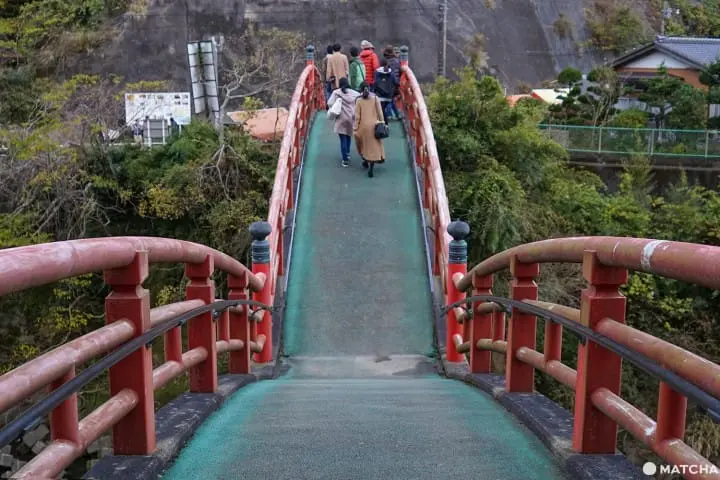
After visiting the Kannon, let's return on the same route. While the bridge might not seem far, it's much steeper when you're crossing it. The structure's flooring is a coarse-textured material that has been treated to be non-skid. You, fortunately, won't have to worry about slipping or falling.
Walk Along the Valley River
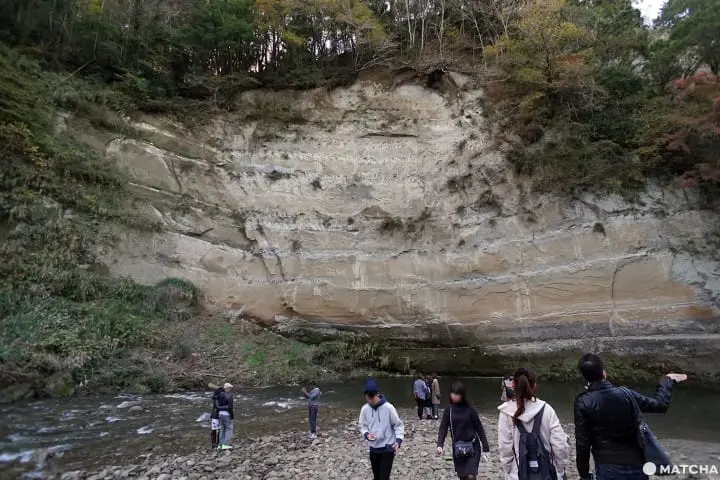
Get off the bridge, then turn right. Cross a small narrow path up ahead, and you'll arrive at the Yoro River. This is the entrance to the Nakase Promenade. Get off the path to arrive at the spot you saw several people going to earlier. You'll be able to see the geological formations against the steep cliffs in front of you.
The promenade starts from here. Now then, let's start walking.
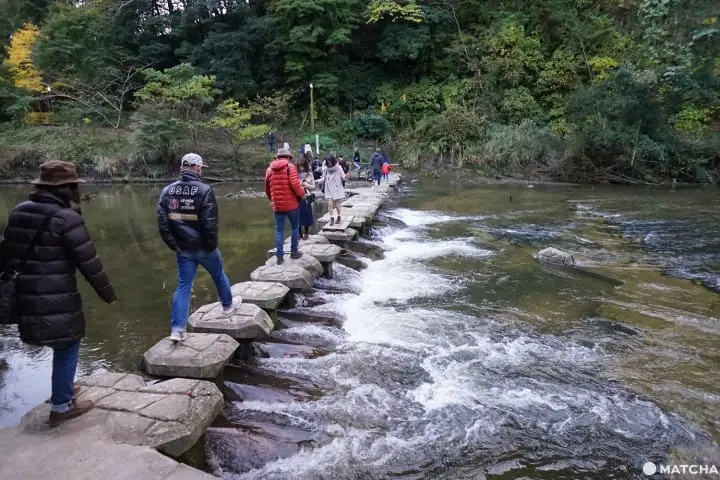
First, cross the river. Several spots throughout the route will require visitors to cross the river on stepping stones such as these. Doesn't this feel a bit like an adventure?

You can see fall foliage here, too.
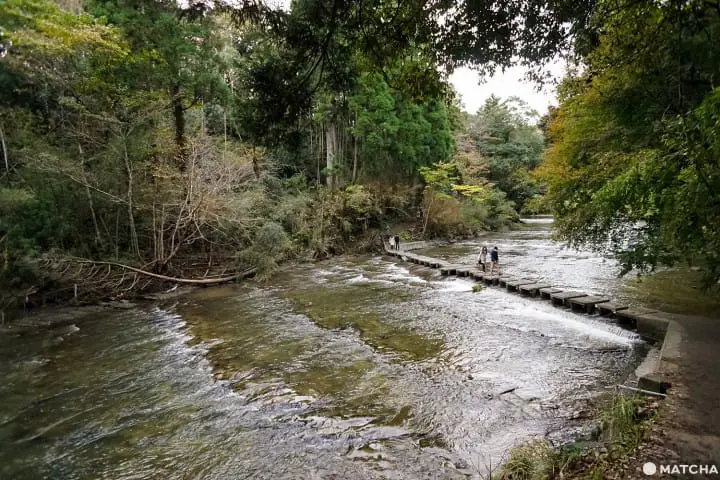
Walk along the river and mountain's base. Your body will feel cleansed as you walk past pristine waters surrounded by fresh air.
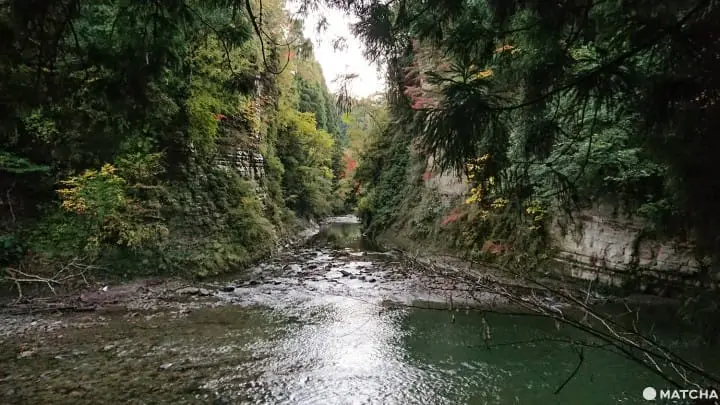
Here is the Kobundo Ruins, a tunnel made by excavating the mountain's side to draw water from the Yoro River. The tunnel collapsed in 1979, resulting in its current state. Even now, pieces of stone from its collapse remain on the ground. Once you've come this far, there's less than half of the route to go.
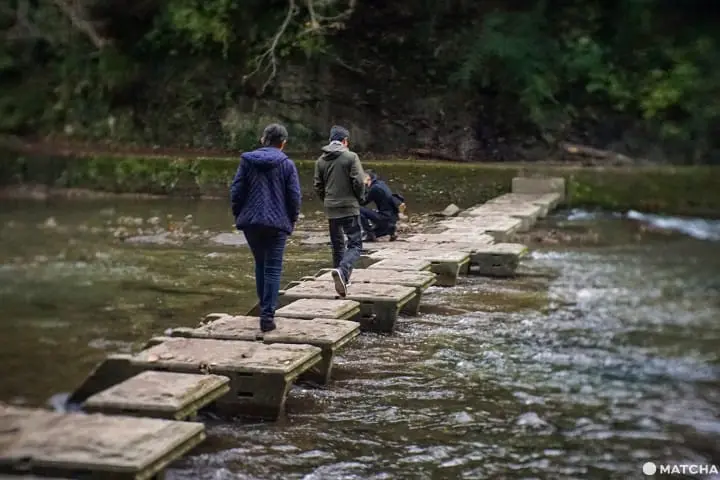
In autumn, the sun begins to set quickly. Let's slightly increase our walking pace.

We arrived at the Kyoei Bridge. Last year, illuminations were held from 17:00 to 21:30. For details on the time schedules in 2019, be sure to check the Yorokeikoku Sightseeing Association’s official website (Japanese).
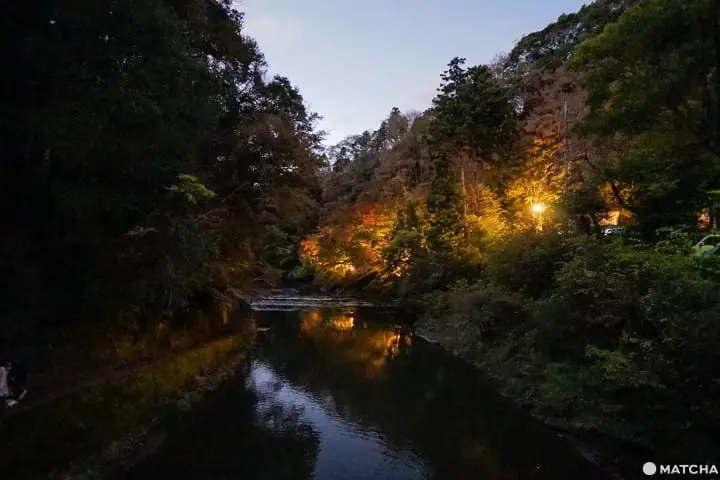
When we tried to turn back, the path had become so dark to the point nothing was visible.
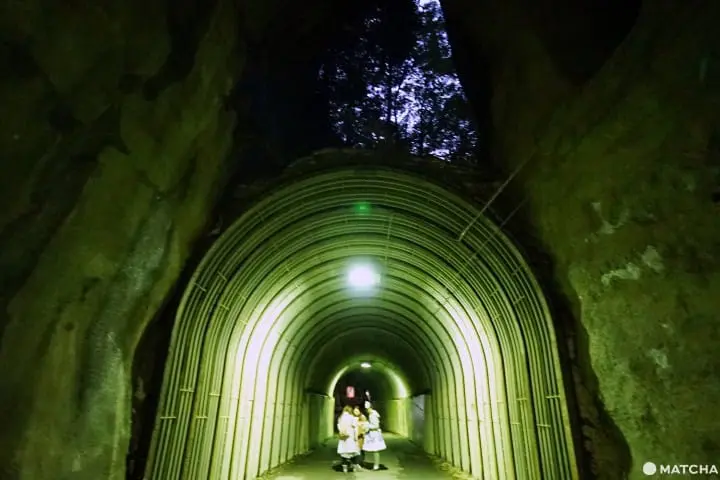
On the other side of the bridge is a two-story tunnel (measuring 110 meters in length) that joins an old and new passageway together.
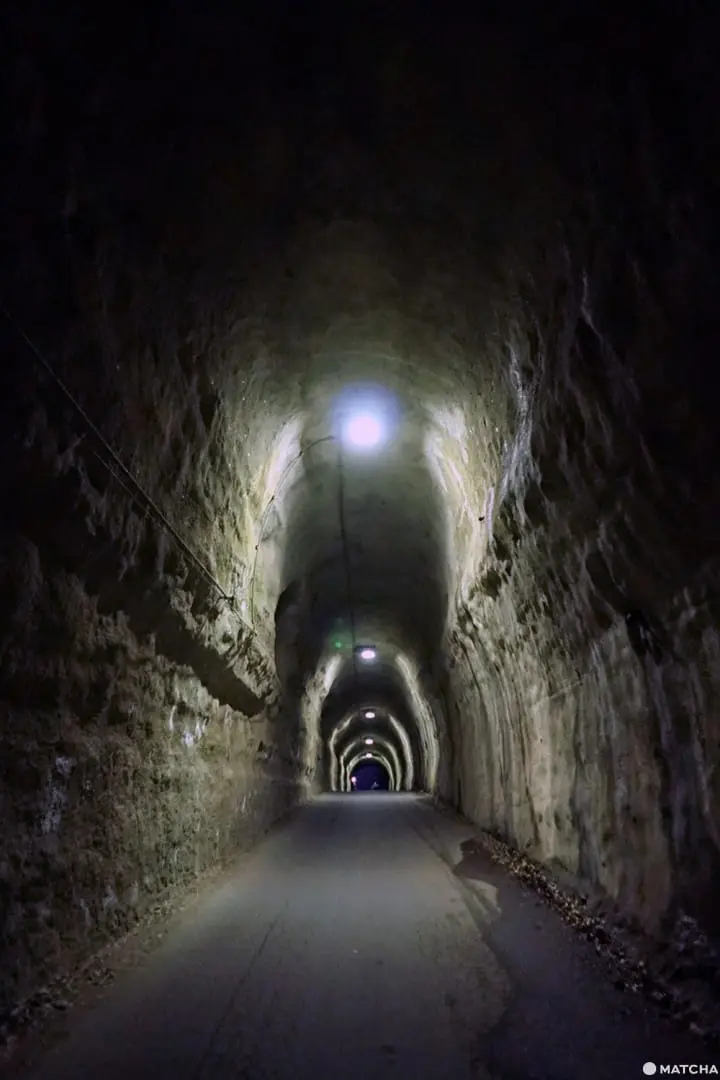
The old tunnel was excavated without shoring, which gives it a rugged surface and photogenic quality. Go through the tunnel and return to the road where you first got off the bus.
This path is closer to the Kobundo Ruins. If you return by this tunnel, there's no need to go to the riverbed at the opposite entrance. Go through this pathway if you don't have the extra time.
Return Route

We missed the bus to arrive at the train station and decided to walk back. Along the way, we came near a slightly illuminated Kannon Bridge, which allowed us to enjoy the evening's fall foliage.
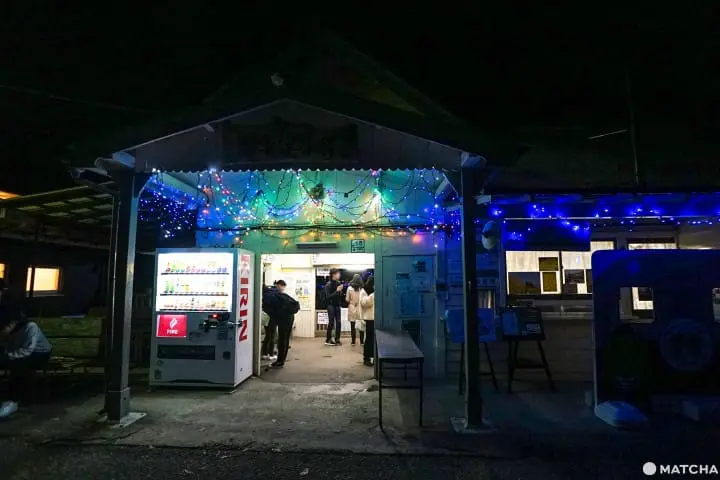
Since we trekked the long route around the mountain, the walk took around 30 minutes! The road is completely dark, so be sure to light up the path with your phone's flashlight to let drivers know there are pedestrians.
After half an hour, we finally returned to Yoro Keikoku Station. The illuminations were dazzling.
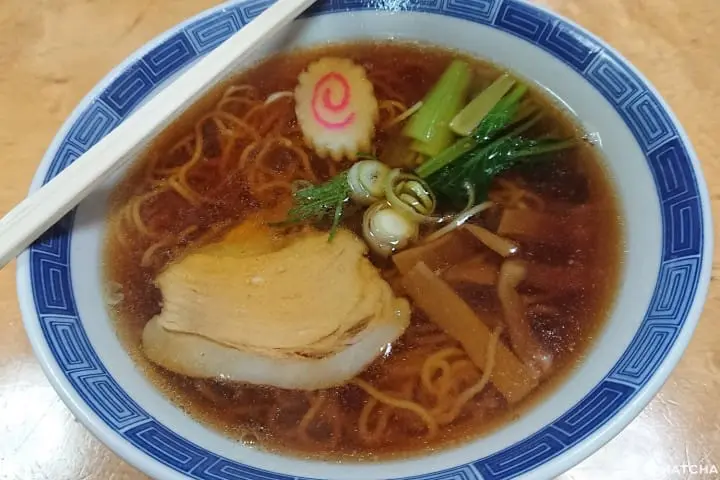
While we waited for the next train, we decided to go to Kenryu, a restaurant in front of the station, and order a shoyu (soy sauce) ramen. The simple flavor and light soup were excellent.
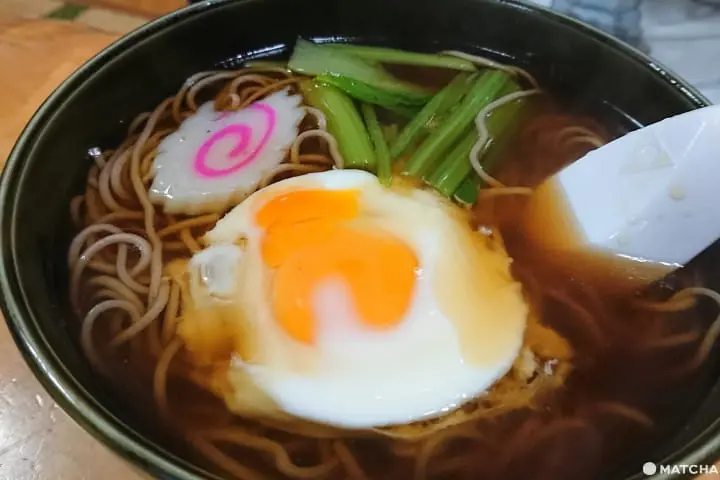
Our writer’s friend ordered the tsukimi soba (buckwheat noodles topped with an egg). All menu items with the word “tsukimi” are served with an egg.
As we slurped on hot soup, our bodies gradually warmed up—right down to our very bones. After you finish eating, wait for the train at the station platform.
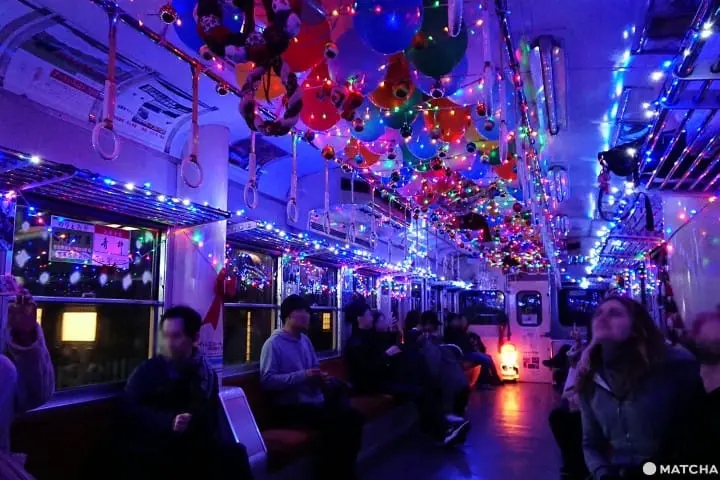
Just when we thought the train had entered the platform, we heard a group erupt with excitement. That's because the last train car was decorated with lights, just as shown in the picture above. Our writer was also secretly excited about the light-up.
Kominato Railway annually operates its illumination train from the end of November to around the end of December. Information on the 2019 service will be published on their official website (Japanese) sometime in October.
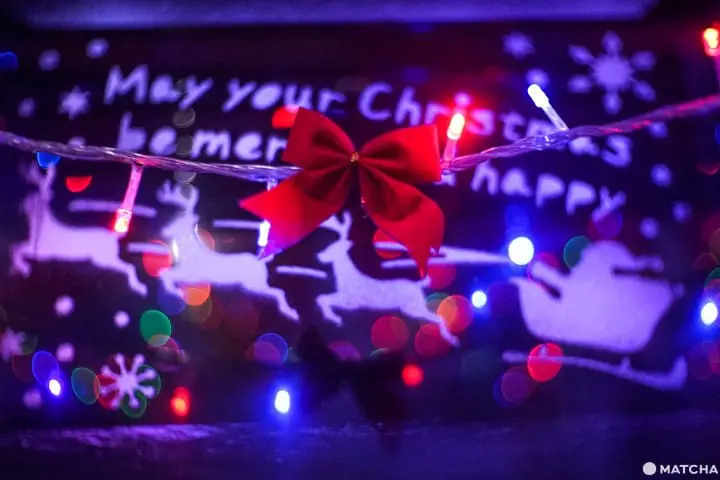
The glass windows were painted with spray-on snow.
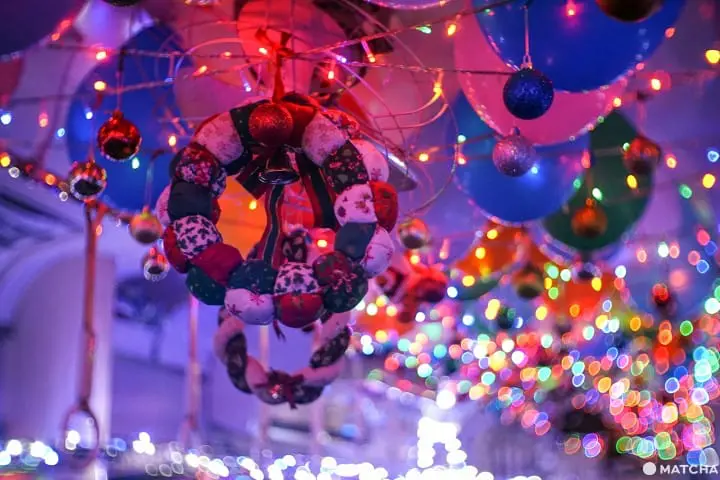
The full-blown decorations are impressive.
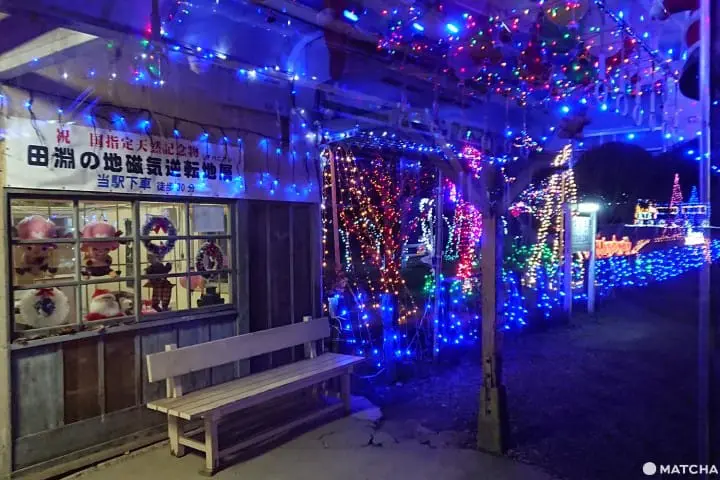
The street in front of the station was also decked out with lights. The locals truly go all out in their decorations. There were even other stations that were flashier.

Look at this adorable heart-shaped hand strap! There is only one heart-shaped strap in each train car, and one was right in front of us!
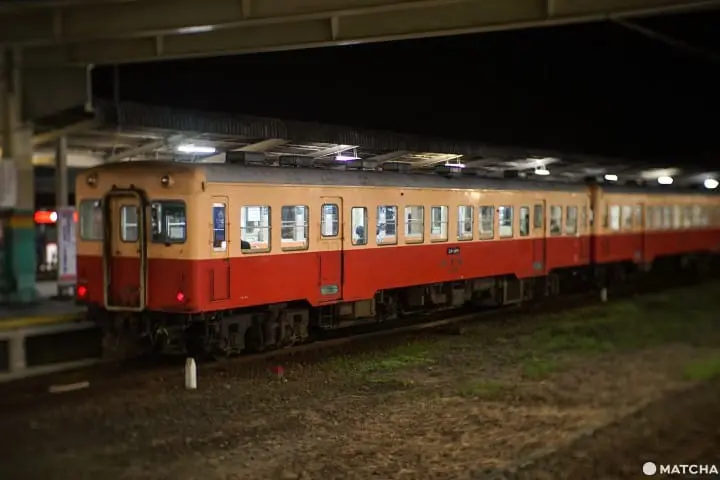
After an hour, we returned to Goi Station—where we began our journey. As our trip came to a close, we felt exhilarated with our expectations exceeded.
Admire the Autumn Leaves in Chiba’s Valleys
If you want to enjoy the fall foliage near Tokyo, then make your way to Yoro Valley. There are not only autumn leaves but also cherry blossoms in the spring or camping and hiking in the summer. You can always look forward to something each season!
If you have spare time, please visit the beautiful Awamata Falls or the Chibanian (a stratum that dates the reversal of Earth's magnetism 126,000 to 770,000 years ago). The areas along the Kominato Railway Line are filled with rare and gorgeous sights.
*This article was translated and edited from an article originally published in Thai.










































![[Yamanashi/ Hokuto City] 4 Hot New Spots Opening in 2026](https://resources.matcha-jp.com/resize/720x2000/2025/12/12-252747.webp)

![[Reopening in March 2026] Ikoma Sanjo Amusement Park Park, 45 minutes from Osaka , with free admission](https://resources.matcha-jp.com/resize/720x2000/2024/08/28-194409.webp)
![[Gunma] 5 recommended gourmet foods at Kawaba Denen Plaza Roadside Station!](https://resources.matcha-jp.com/resize/720x2000/2025/02/26-225970.webp)
![[Kanazawa] Enjoy the world of gold leaf to the fullest in the city with the highest production volume in Japan](https://resources.matcha-jp.com/resize/720x2000/2025/11/12-249564.webp)